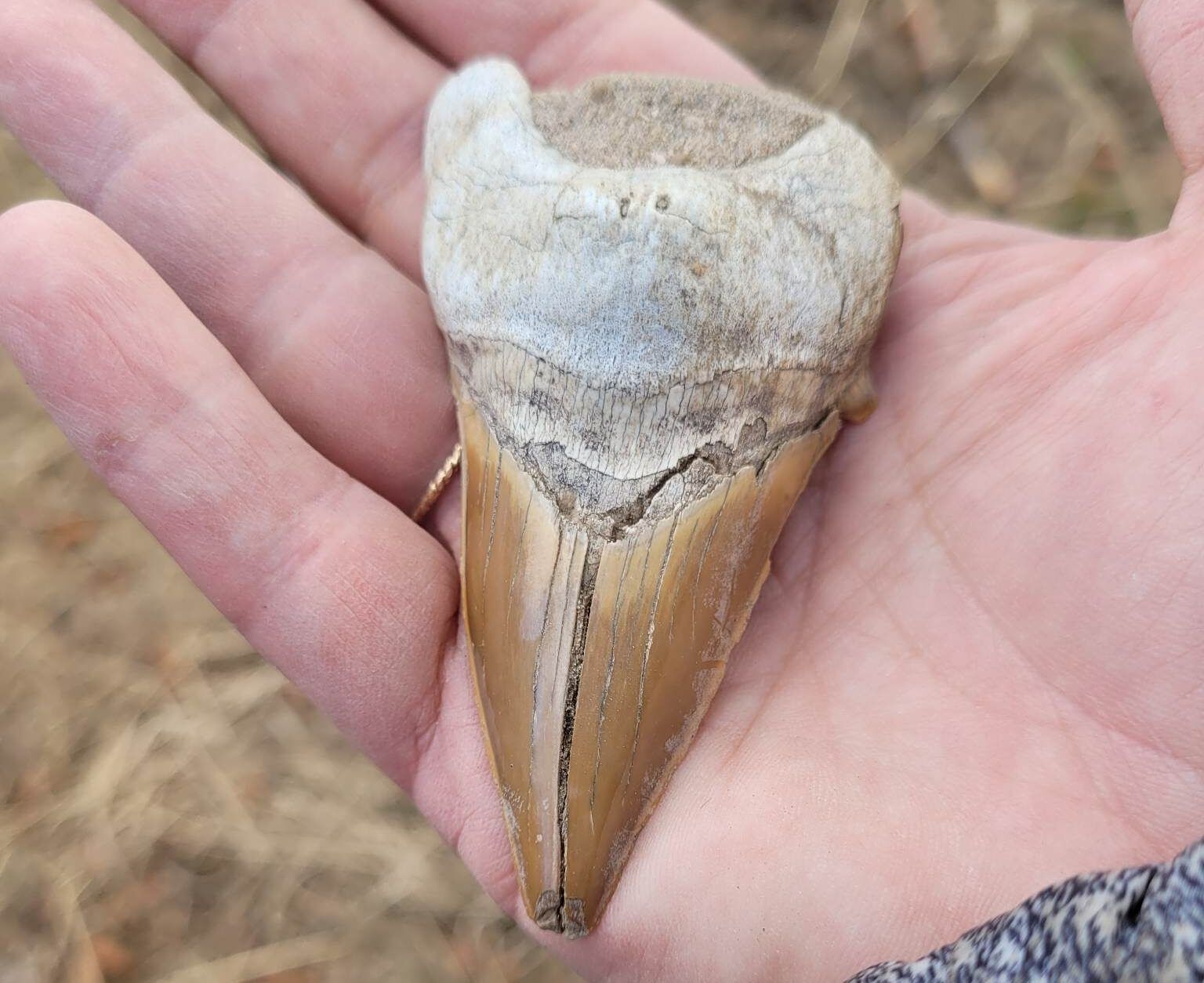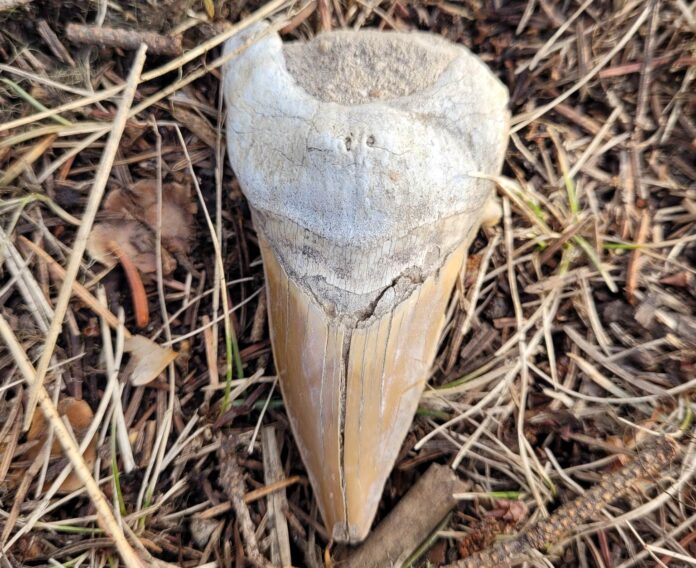They were hunting for agates, they found a piece of pre-history.
While combing the Nechako River on Tuesday (April 11), Rachel Cook and her step-daughter Addison Shill came across something unusual.
“We were at a section where it was both gravelly and clay,” Cook told My PG Now – an area she did not have much hope for agates in – when they found something else.
“As we were walking by, she and I noticed at the same time… initially I thought it would be our agate find of the evening because it had a bit of a shine to it.”

She said two-thirds of what was hopefully an agate was submerged in the mud, but when she dislodged it, it was not the rock she was looking for.
“We took it with us because I knew right away that it wasn’t something normal,” Cook said. “Her and I both said ‘It looks like a shark’s tooth, only way bigger.’”
It is a good thing they did, because Cook and Shill would later find out they were holding the tooth of a megalodon – a pre-historic shark – that is anywhere between 3-25 million years old.
According to the Natural History Museum, these sharks were the largest that have ever lived – reaching up to 60 feet long.
The museum says “it is estimated that its jaw would span 2.7 by 3.4 meters wide, easily big enough to swallow two adult people side-by-side.
These jaws were lined with 276 teeth, and studies reconstructing the shark’s bite force suggest that it may have been one of the most powerful predators ever to have existed.”
After returning home from their expedition, Cook took to social media to see if she could find out what it was she was holding.
Hundreds of people were immediately interested and helped Cook connect with multiple paleontologists who confirmed it was once in the mouth of a giant, prehistoric shark.
But how did one of these end up in Prince George?
“We had a paleontologist respond saying that it was more than likely here as a result of something called glacier displacement,” Cook explained.
“Meaning when it was already a fossil, however many hundreds of thousands of years ago, a glacier scraped it up as it was coming down here, and it took a very long, slow ride down here – eventually settling in the mudbanks of the Nechako river.”
Prior to this, Cook had not considered what she would do with a pre-historic shark tooth.
Right now she wants to hold on to it as a trophy, but eventually she said she is interested in donating to a BC Museum.
Something going on in the Bulkley Valley Lakes District you think people should know about?
Send us a news tip by emailing [email protected].





